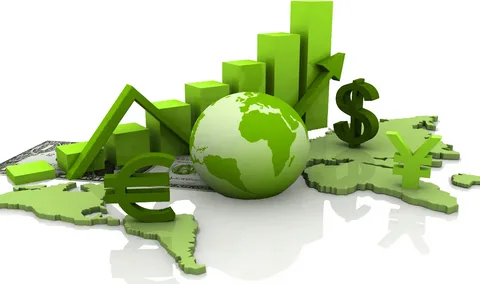
In an era of climate change concerns and a growing consensus on sustainable practices, embracing a decarbonized economy has become imperative. The transition to a cleaner, greener future is not merely an environmental aspiration; it’s an economic necessity.
This blog explores the roadmap to a cleaner tomorrow, focusing on the transition towards a decarbonized economy.
The Urgent Need for a Decarbonized Economy
The planet’s climate is undergoing unprecedented changes due to the excessive emission of greenhouse gases, primarily carbon dioxide, from human activities. These emissions are responsible for global warming, extreme weather events, rising sea levels, and ecological disruption. Reducing carbon emissions drastically is crucial to avert the worst consequences of climate change. Hence, there is an urgent need for a decarbonized economy.
A decarbonized economy minimises carbon emissions across all sectors, including energy production, transportation, agriculture, and industry. Achieving this goal requires a well-structured roadmap.
The Key Pillars of the Roadmap
We must follow important sustainability and innovation pillars to create a decarbonized economy. These pillars are discussed below and are vital for a greener future.
- Transition to Renewable Energy: A fundamental step for a decarbonized economy is the shift from fossil fuels to renewable energy sources like solar, wind, and hydropower. Governments and businesses must invest in renewable energy infrastructure, incentivise clean energy adoption, and support research and development in renewable technologies.
- Energy Efficiency: Improving energy efficiency in buildings, transportation, and industrial processes is another critical pillar. This involves upgrading infrastructure, developing energy-efficient technologies, and promoting sustainable practices.
- Electrification of Transportation: The transportation sector significantly contributes to carbon emissions. Electrifying vehicles, expanding public transportation, and developing efficient electric vehicle charging networks are essential for a decarbonized economy.
- Carbon Pricing: Implementing carbon pricing mechanisms, such as carbon taxes or cap-and-trade systems, can incentivise businesses to reduce emissions and invest in cleaner technologies.
- Green Finance: Encouraging investment in sustainable projects and businesses through green finance initiatives can accelerate the transition to a decarbonized economy. This includes green bonds, impact investing, and sustainable banking practices.
- Carbon Capture and Removal: Developing and deploying carbon capture and removal technologies can help offset emissions that are difficult to eliminate.
- Circular Economy: Embracing circular economy principles, where resources are used more efficiently and waste is minimised, can reduce the carbon footprint of various industries.
- Education and Awareness: Public awareness and education campaigns are essential for garnering support and ensuring a collective commitment to a decarbonized economy.
Challenges and Solutions
While the transition to a decarbonized economy offers numerous benefits, it also presents challenges, including:
- Cost of Transitioning: Transitioning to a decarbonized economy requires significant upfront investments in renewable energy, energy efficiency, and green transportation. To address this, governments can offer incentives like tax breaks, subsidies, and low-interest loans to make clean technologies more accessible.
- Job Displacement in Fossil Fuel Industries: Shifting away from fossil fuels can result in job displacement in the coal, oil, and gas sectors. “Just transition” policies can be implemented to provide retraining, education, and job placement assistance to affected workers, minimising the social and economic impact.
- International Cooperation: Climate change is a global issue that demands cooperation among nations. Collaborative efforts, such as setting emission reduction targets and supporting climate initiatives, are essential. International agreements like the Paris Agreement are crucial in fostering global cooperation.
- Technological Innovation: Technological advancements are pivotal for decarbonization. Governments and industries must invest in research and development to drive innovation in clean energy, carbon capture, and sustainable materials. Encouraging cross-sector collaboration and offering research grants can expedite progress.
- Political Will and Policy Consistency: Long-term commitment is vital for success. Political leaders must maintain consistent policies supporting clean energy and sustainability, providing stability for businesses to invest in green technologies and transition operations.
By actively addressing these obstacles and embracing a sustainable future, we can realise the myriad benefits of a decarbonized economy: a healthier planet, economic resilience, and improved quality of life for all.
A Smarter Step Towards a Decarbonized Economy
As we navigate the challenges and opportunities on the road to a decarbonized economy, it’s evident that this transition is not only environmentally imperative but also an economic necessity. Given the current climate crisis, the urgency of reducing carbon emissions and embracing sustainable practices cannot be overstated. We can address the formidable challenges by adhering to this roadmap’s key pillars.
Together, we can mitigate the worst impacts of climate change and build a future characterised by environmental stewardship, economic prosperity, and equity for all. Partner with a prestigious brand that encourages accelerating the process. You can amplify your efforts with their industry knowledge and team of experts.